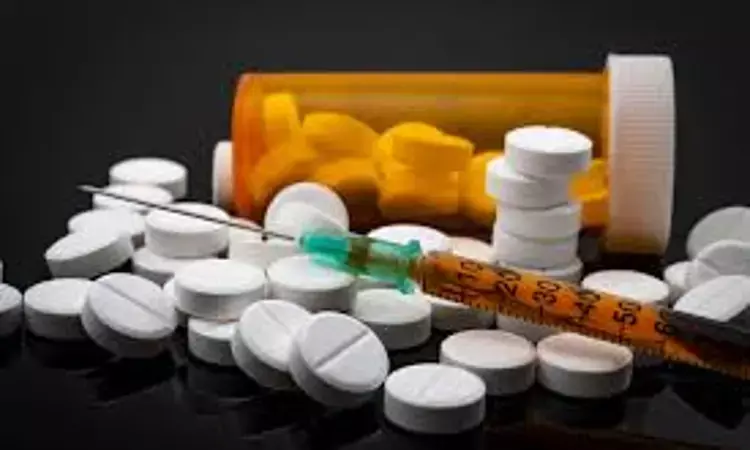- Home
- Medical news & Guidelines
- Anesthesiology
- Cardiology and CTVS
- Critical Care
- Dentistry
- Dermatology
- Diabetes and Endocrinology
- ENT
- Gastroenterology
- Medicine
- Nephrology
- Neurology
- Obstretics-Gynaecology
- Oncology
- Ophthalmology
- Orthopaedics
- Pediatrics-Neonatology
- Psychiatry
- Pulmonology
- Radiology
- Surgery
- Urology
- Laboratory Medicine
- Diet
- Nursing
- Paramedical
- Physiotherapy
- Health news
- Fact Check
- Bone Health Fact Check
- Brain Health Fact Check
- Cancer Related Fact Check
- Child Care Fact Check
- Dental and oral health fact check
- Diabetes and metabolic health fact check
- Diet and Nutrition Fact Check
- Eye and ENT Care Fact Check
- Fitness fact check
- Gut health fact check
- Heart health fact check
- Kidney health fact check
- Medical education fact check
- Men's health fact check
- Respiratory fact check
- Skin and hair care fact check
- Vaccine and Immunization fact check
- Women's health fact check
- AYUSH
- State News
- Andaman and Nicobar Islands
- Andhra Pradesh
- Arunachal Pradesh
- Assam
- Bihar
- Chandigarh
- Chattisgarh
- Dadra and Nagar Haveli
- Daman and Diu
- Delhi
- Goa
- Gujarat
- Haryana
- Himachal Pradesh
- Jammu & Kashmir
- Jharkhand
- Karnataka
- Kerala
- Ladakh
- Lakshadweep
- Madhya Pradesh
- Maharashtra
- Manipur
- Meghalaya
- Mizoram
- Nagaland
- Odisha
- Puducherry
- Punjab
- Rajasthan
- Sikkim
- Tamil Nadu
- Telangana
- Tripura
- Uttar Pradesh
- Uttrakhand
- West Bengal
- Medical Education
- Industry
Low-cost ultraviolet light spectrometer may detect altered take-home doses of methadone in OUD

Methadone is a controlled medicine that is efficient in controlling opioid use disorder; nevertheless, take-home methadone diversion is possible and difficult to detect, says an article published in the Journal of Addiction Medicine.
The genuine public interest in methadone diversion control arises from methadone's classification as a schedule II prohibited narcotic, as well as the notion that it is a long-acting opiate that is addictive in and of itself, with the potential for misuse by both opiate addicts and nonaddicts. Methadone, like any other narcotic, may be toxic and life-threatening in some circumstances. Methadone is a highly effective treatment for opioid use disorder. Methadone is delivered in opioid treatment programs under strictly controlled conditions. However, take-home dosage diversion can happen and is hard to detect. As a result, John R Brooklyn and colleagues intended to investigate the use of a portable ultraviolet light absorption spectrometer to identify methadone concentrations in take-home bottles that were likely to be tampered with by the patient.
Standard dilutions of methadone hydrochloride oral concentrate were utilized to calibrate absorption wavelengths, which were then compared to take-home concentrations from suspected and unknown bottles to examine if observed concentrations differed from predicted dosages.
The key findings of this study were as follows:
1. The 99% confidence intervals were calculated using ten standardized "control" dosages.
2. These were contrasted to 104 "not-of-concern" samples collected at random during a 10-month period.
3. An additional 103 methadone bottles of interest from 27 individuals revealed 15 bottles with 25% and 8 bottles with 75% of predicted amounts.
In conclusion, a portable, low-cost ultraviolet light spectrometer identified changes in methadone take-home dosages. This assay provides methadone clinics with a simple and effective approach for doing in-house analysis on "call back" methadone doses. It enables individual clinics to specify their patient body's diversion rates, while also helping federal agencies to better assess how much prescription methadone is diverted for illegitimate purposes.
Reference:
Brooklyn, J. R., & Matthews, D. E. (2022). Simple, Rapid Spectrophotometric Assay of Dispensed Methadone for Diversion Control. In Journal of Addiction Medicine: Vol. Publish Ahead of Print. Ovid Technologies (Wolters Kluwer Health). https://doi.org/10.1097/adm.0000000000000990
Medical Dialogues consists of a team of passionate medical/scientific writers, led by doctors and healthcare researchers. Our team efforts to bring you updated and timely news about the important happenings of the medical and healthcare sector. Our editorial team can be reached at editorial@medicaldialogues.in.
Dr Kamal Kant Kohli-MBBS, DTCD- a chest specialist with more than 30 years of practice and a flair for writing clinical articles, Dr Kamal Kant Kohli joined Medical Dialogues as a Chief Editor of Medical News. Besides writing articles, as an editor, he proofreads and verifies all the medical content published on Medical Dialogues including those coming from journals, studies,medical conferences,guidelines etc. Email: drkohli@medicaldialogues.in. Contact no. 011-43720751


